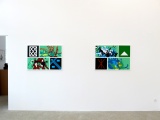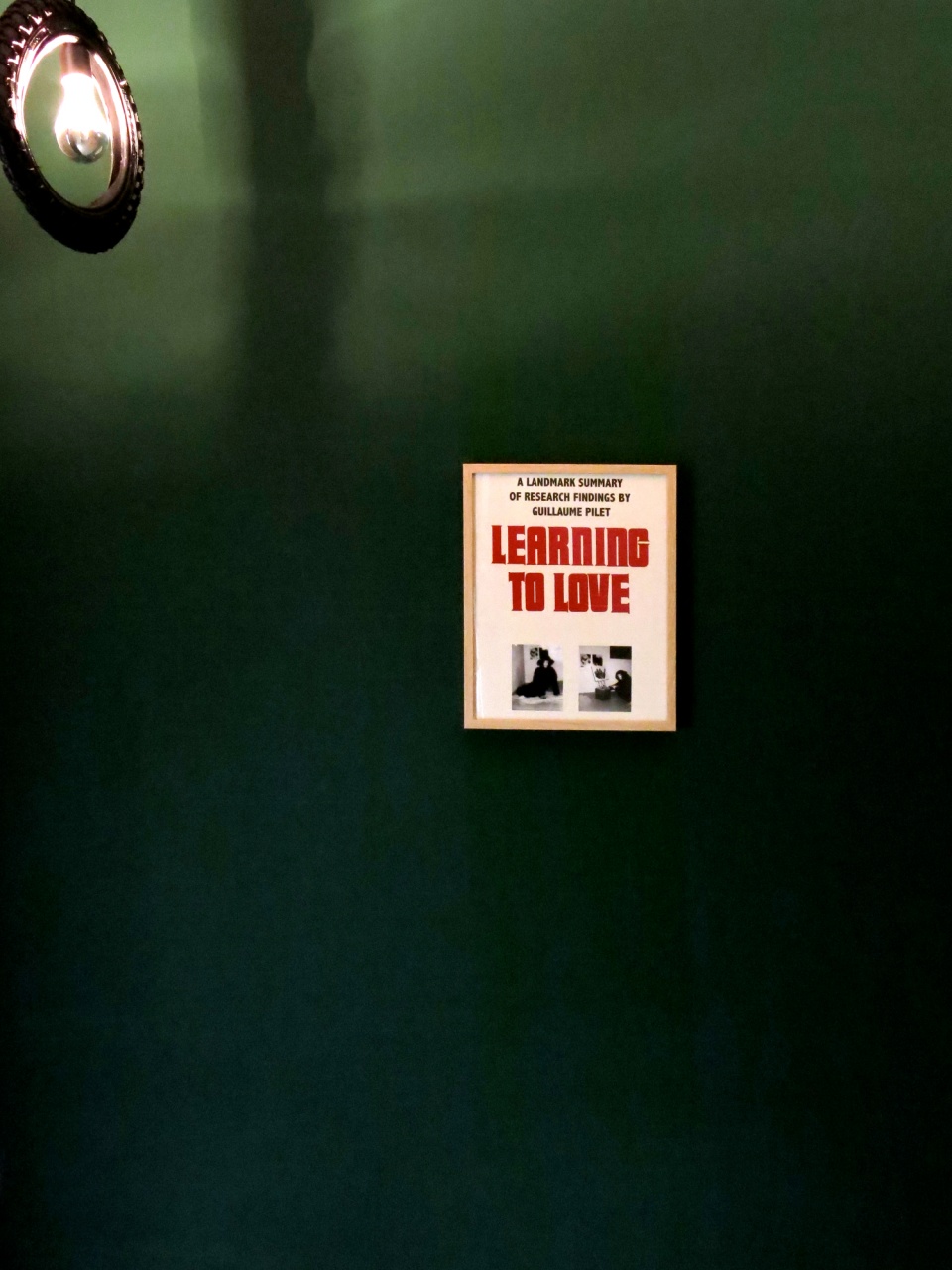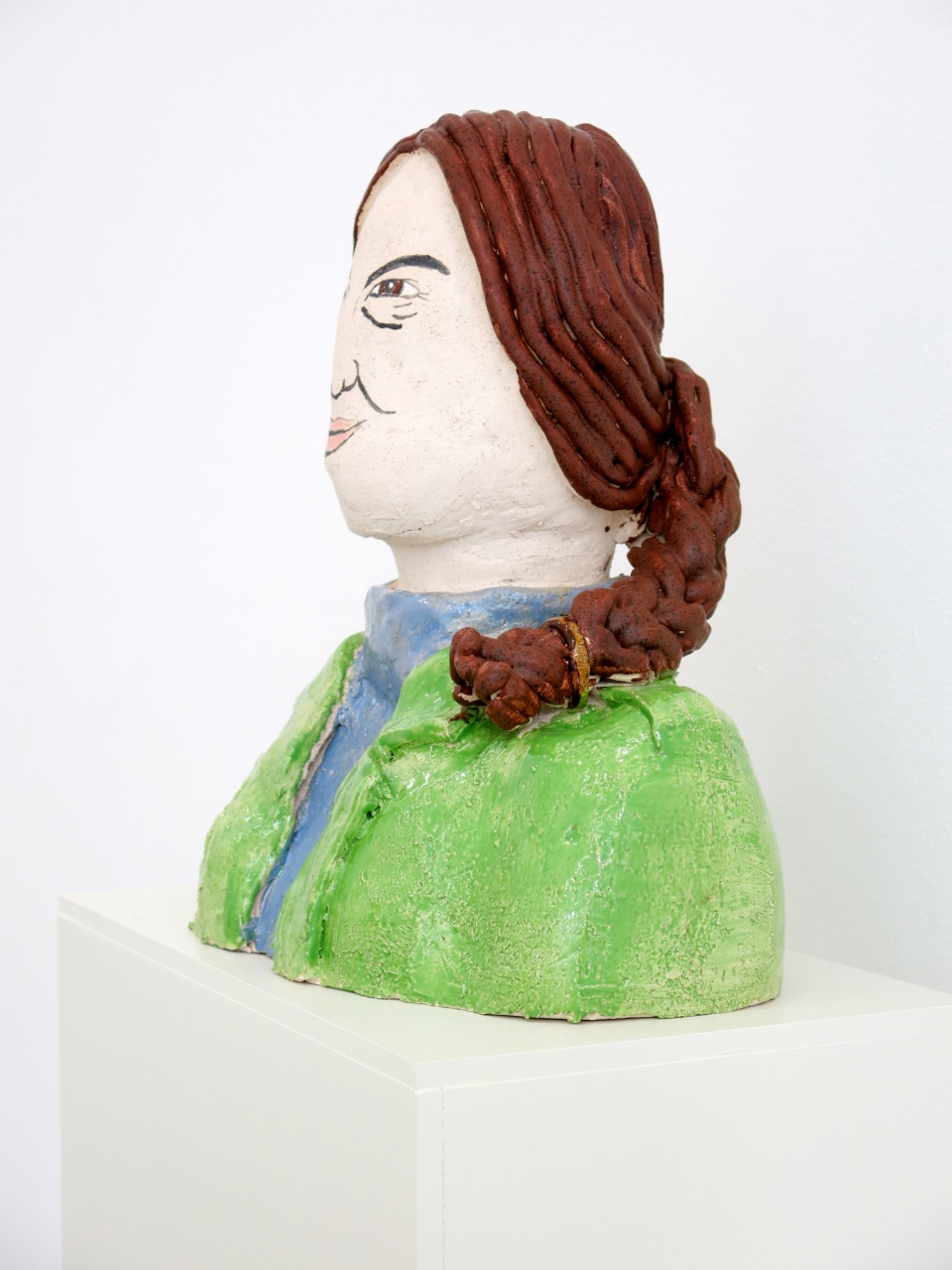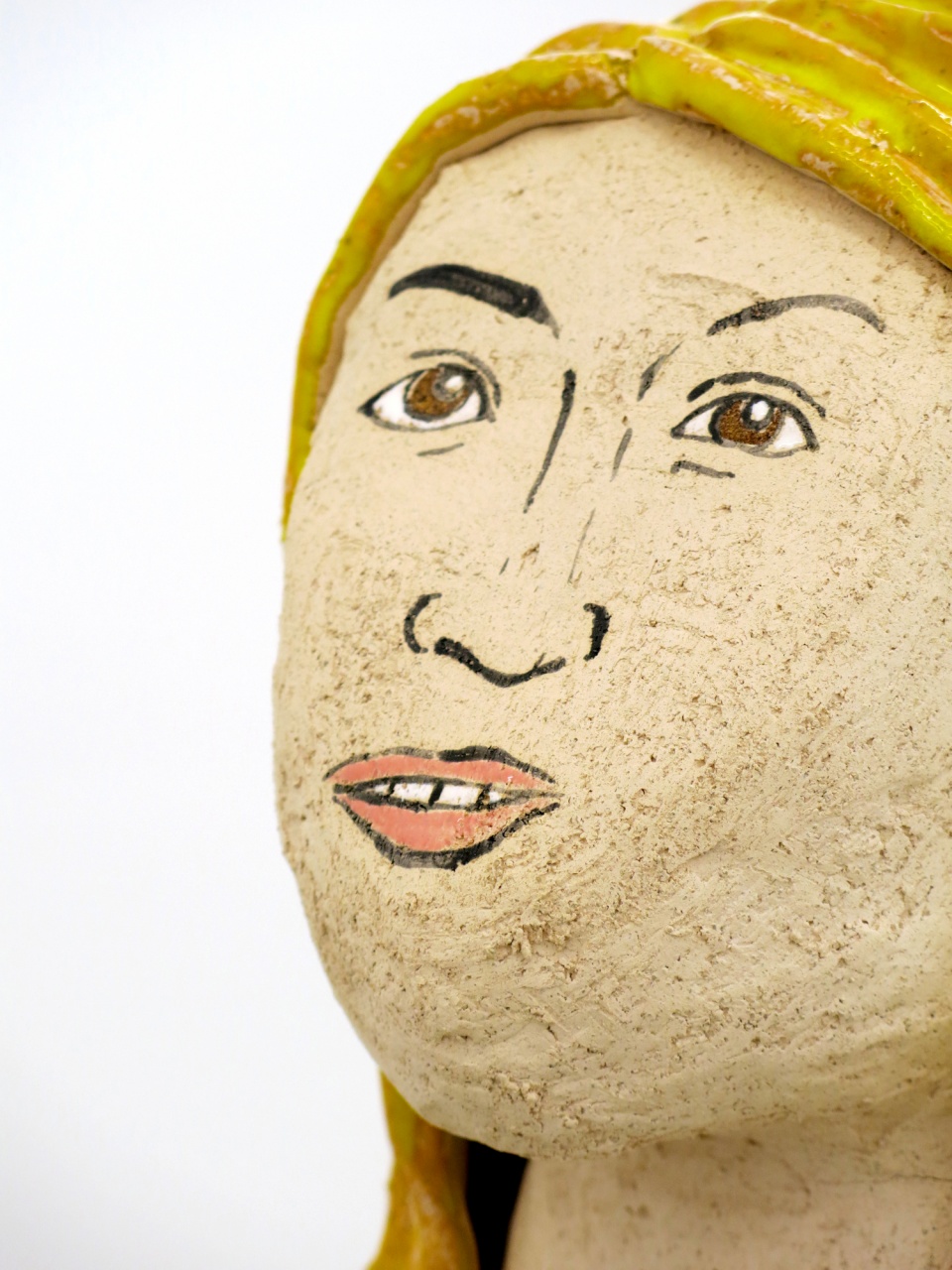Guillaume Pilet, 21 March 2013 – 18 May 2013
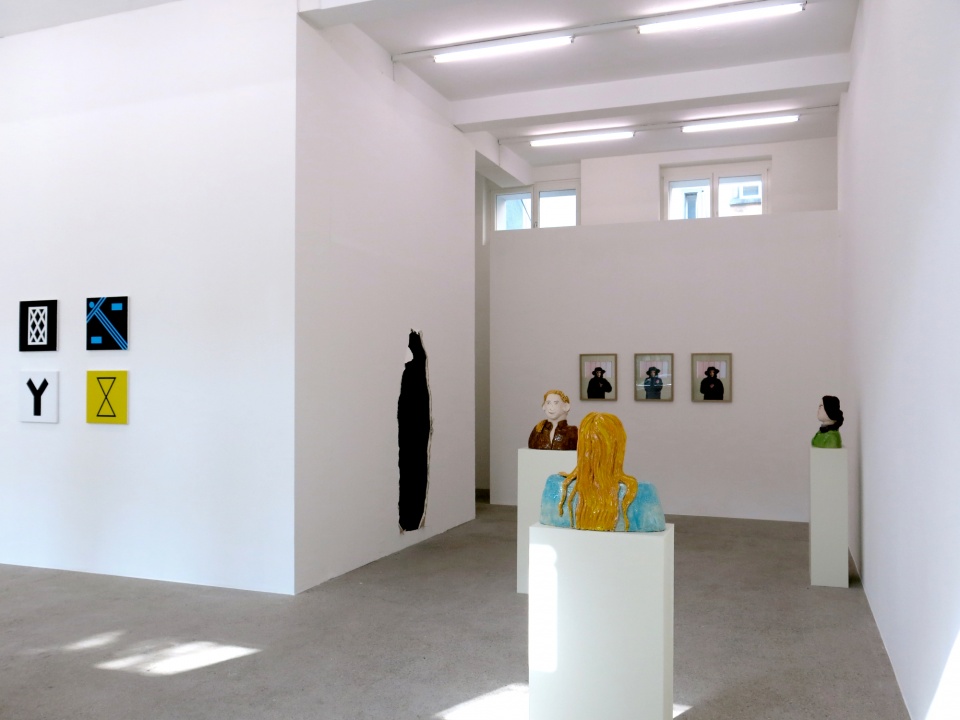
Installation view, Rotwand, Zurich, 2013
SURROGATE MOTHERS
OPENING: WEDNESDAY, MARCH 20, 6 – 8 PM
An interview between Tiphanie Blanc and Yann Chateigné with Guillaume Pilet
Tiphanie Blanc and Yann Chateigné: You have referenced key figures in primatology in a number of projects before. What sets this work and research apart is your personal pantheon, which now has a number of new entries. What role do Dian Fossey, Jane Goodall, Harry Harlow and their apes play in your exhibition at Rotwand?
Guillaume Pilet: Harry Harlow is everywhere, I even reference him in the title. Surrogate Mothers is a concept I borrowed from a series of experiments that the behavioural scientist carried out with baby monkeys. Through these experiments he demonstrated the importance of love – something previously ignored by science – for learning processes and the development of cognitive thinking. This is also a central theme in Learning From Aping, which is the name of my own research into apes which I started a year ago.
I invert the concept of the surrogate mother, shifting the focus to the women scientists who dedicated their lives to studying apes. Dian Fossey gave her life and even died for the mountain gorillas when she was murdered in her fight against poaching. Jane Goodall studied chimpanzees in their natural habitat, and Penny Patterson spent much of her youth exclusively in the company of the female gorilla, Koko, who she taught to used American sign language.
This form of selflessness interests me in a number of ways. For one, the first groundbreaking insights into great apes were all thanks to young women, because supposedly female characteristics such as patience, gentleness or empathy (mother instinct) were considered the best qualification for ethological studies. However sexist this assessment, it did mean that women were able make real headway in this branch of science.
Then as regards these women figures, I am interested in the image of them in the media. Dian Fossey and Jane Goodall, who are mostly known through National Geographic, as well as the cover photo that Koko took of herself, are an integral part of our collective visual heritage.
But I should admit that I was also fascinated by the reports of their total and obsessive selflessness. When I read Dian Fossey's biography it followed me into my dreams.
In the exhibition the three women are represented in huge busts, their faces are egg-shaped and without contour and their expressions are drawn from photographs. So there are these massive, exemplary figures who I have added to my personal mythology, as well as faces we know from the media who are part of the collective visual heritage.
I refer to Harry Harlow in three ceramic figures inspired by the Surrogate Cloth Mother, which provides love and security.
Let's talk more about Koko photographing herself. She evokes the clever ape but also the self-portrait genre as a whole. This gesture can also be interpreted as an image of the artist in the distorting mirror of the anthropomorphic animal and thus as a grotesque pseudoscientific self-presentation. Your interest in an image like this must have a deeper meaning.
Aside from the portrait of the artist as monkey, which goes back to the Renaissance expression ars simia naturae (literally,art is the ape of nature) and is an admission of art's inability to portray nature as well as art's shortcomings in general, what I find interesting about this self-portrait is the anthropomophising of the object, which at the same time implies the dissolution of the human figure. What you see on the cover of National Geographic is not just an ape, but a portrait that is not made by a human hand. To an extent this is really a form of emancipation/liberation. Last year, however, another monkey self-portrait went through the print and online media and actually triggered a serious debate about copyright. To return to Koko, interestingly she made it onto the cover of National Geographic a second time in 1985. This time Koko was holding a young cat in her arms. Anthropomorphism were so far here that people were crediting the gorilla with having emotional affect, a universal feeling evoked by her interaction with a little cat.
Don't you worry that visitors will see only the humorous, grotesque side of these images and forget about the project's scientific and anthropological aspects? How will you realise these experiments formally?
I think that the seriousness and energy with which I carry out my research will prevent it sliding into comedy. What I obviously found so fascinating about the image of the monkey is that it crops up in such different areas: in art history, as I mentioned earlier, in groundbreaking experiments in behavioural psychology, and in the entertainment sector in regressive shows like the TBS Chimp Channel show, where parodies are played by chimpanzees.
I'm not a scientist. My intuitive methods of assimilating these various allusions often have a metaphorical or allegorical character. I think that viewers who follow their own associations will pick up on the more serious questions behind these humorous-looking forms.
Their a priori playful appearance might even make the effect of these works even more brutal.
Can you explain a little more about how these questions are transmuted in the exhibition?
Through the different interpretations of the works, I think. On the wall, for example, are small abstract images, hung classically. A diverse formal vocabulary is played out on these canvases, but actually they are copies of lexigrams created in the USA in the early 70s. They are abstract word symbols that were created to communicate with great apes whose vocal chords are unable to produce any of the sounds that resemble human language. The small square images are simply abstractions made for apes – a fortiori “intelligent” apes who can determine their “exact” meaning. I have frequently chosen concepts that are not usually associated with the conceptual world of apes, such as “tomorrow”, or which describe interactions such as “feel”, “hug”, “play”, as well as words that allow the monkey to express an opinion, like “yes” and “no”.
As in many of your projects, here you also use classical, canonical or even academic artistic forms to play with the codes of artistic expression: the portrait bust, abstract painting – either gestural or geometric – and even monumental art. But you use these forms in a deliberately clumsy, regressive and naïve way. One could also see them as a sort of negative development of artistic expression. You are also very interested in the question of mediocrity, perhaps that's what is is about the image primates convey when they ape humans – what you might call a primitive reflection of our culture.
Magritte had his cow period, would you say that you are now in your ape period?
Yes, definitely. A period which will continue until 2016, the year of the monkey.
Learning from Aping certainly seems to occupy a special place in my work as a whole, you could compare it with what Deleuze describes as the advantage of being a stranger within one's own language. But this series of works is not fundamentally different from the rest of my practice, even if I have to admit that in this case I am granting myself greater freedoms because my sphere of activity, one could call it a pretext, lends itself so wonderfully to experimentation. The project consists of extensive documentation – I am compiling a library specialised in monkeys, and collecting articles and objects from everyday culture – and also a very free interpretation of all these phenomena from a point of view that sometimes verges on the pseudoscientific or even pseudoartistic. The fact that I see myself in Magritte's cow period as much as in amateur art is something I put down to my impartiality towards all forms of artistic expression. Learning From Aping offers wonderful possibilities for play, even my own artistic autonomy/authorship is thrown into question. Sometimes I feel like a character that I have invented myself. This is the role I also play in the film that is currently being made about this research.
I often ask myself how I position myself as an artist, but there's no way I could say. I ape art, I think, if not deliberately. I can't seem to do anything else.








